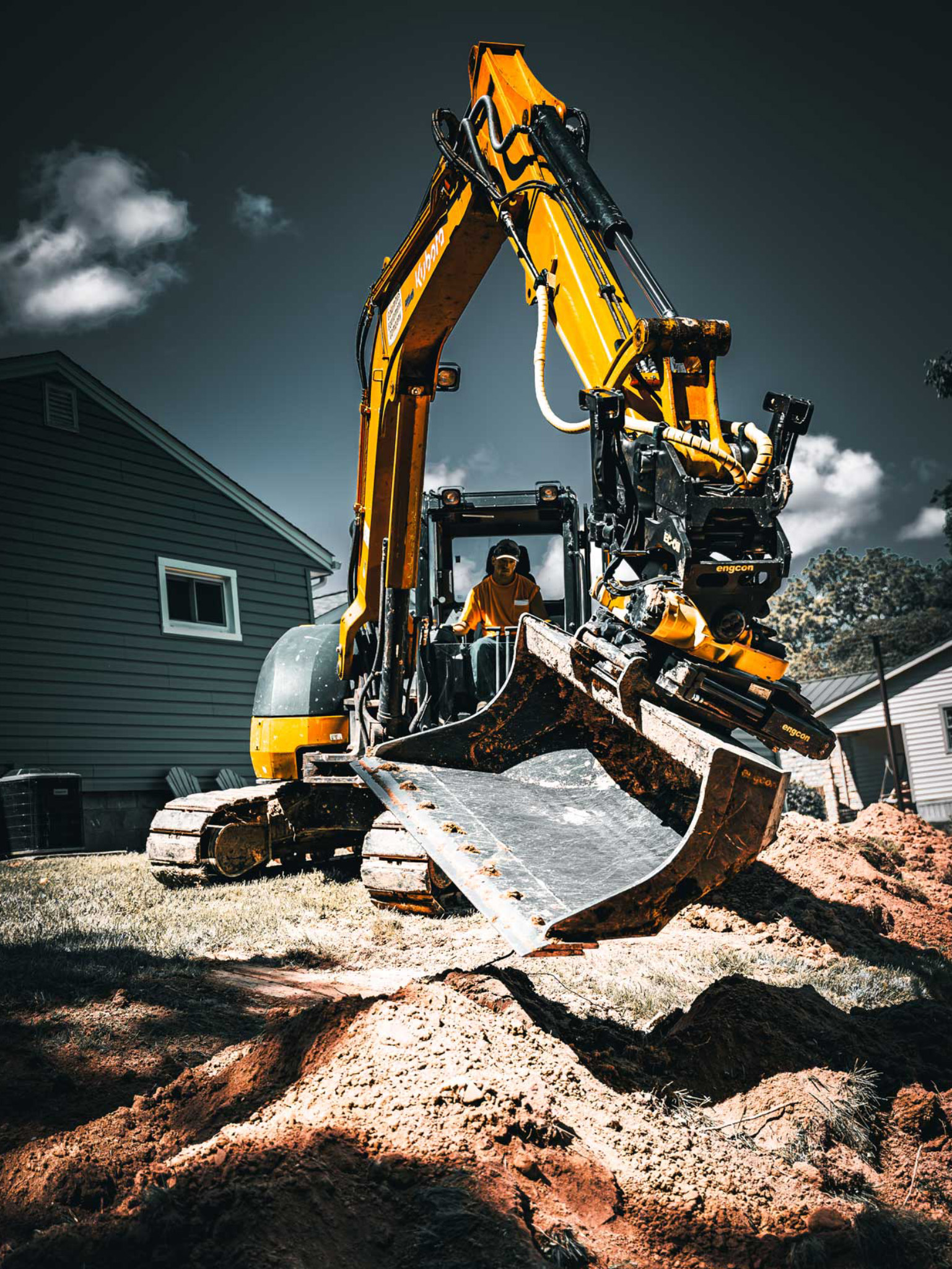Extensive Expedition: The Science Behind Superior Excavation Practices
From ancient hand tools to contemporary hydraulic excavators, the advancement of excavation techniques has been a testimony to human resourcefulness and technological advancements. What really sets superior excavation practices apart is a deep understanding of geological concepts, combined with the utilization of cutting-edge devices and techniques.
Advancement of Excavation Strategies
Throughout history, the advancement of excavation strategies has played a critical role ahead of time building and construction techniques and archaeological discoveries. From the primary tools used by our forefathers to the advanced machinery employed in contemporary times, the development of excavation methods has actually dramatically changed exactly how we come close to various projects.
In old times, hand-operated labor with fundamental tools such as wheelbarrows, pickaxes, and shovels was the key technique of excavation. This labor-intensive process restricted the depth and scope of excavations, usually leading to sluggish progress and restricted accessibility to specific websites. As civilizations progressed, so did the techniques and tools utilized for excavation.
The Industrial Transformation marked a transforming factor in excavation exercise with the intro of steam-powered machinery. This development reinvented the area, enabling faster and more extensive excavations. In contemporary times, modern technology plays a critical function in excavation, with innovations like GPS systems, drones, and 3D scanning enhancing precision and efficiency in the field. The evolution of excavation methods continues to shape the method we construct, discover, and comprehend the world around us.
Duty of Modern Technology in Excavation

The combination of sophisticated innovation has basically transformed the field of excavation, enhancing precision and performance to unprecedented degrees. Among the essential technical innovations that has actually dramatically impacted excavation techniques is the use of GPS systems. These systems permit for accurate mapping of excavation websites, making it possible for operators to properly find below ground utilities and frameworks. Additionally, the use of telematics in excavation tools has actually allowed real-time surveillance of equipment efficiency, leading to proactive upkeep and increased operational efficiency.
Moreover, the development of 3D modeling and simulation software application has streamlined the preparation procedure for excavation tasks. Designers and drivers can now envision the whole excavation process prior to damaging ground, optimizing and determining possible obstacles process. Together with this, the execution of drones in excavation tasks has assisted in airborne studies, volumetric measurements, and site assessments with unmatched speed and accuracy.
Geological Principles in Excavation
An understanding of geological principles is essential for making certain the structural stability and security of excavation websites. Geological elements play a critical function in figuring out the usefulness and safety of excavation jobs (dump truck companies in ohio). One essential geological concept to consider is the kind of dirt or rock present at the site. Different dirt kinds, such as crushed rock, sand, or clay, have varying levels of security and need various excavation methods. As an example, cohesive dirts like clay might call for extra assistance to avoid collapses, while sandy soils might be vulnerable click this site to erosion during excavation.
Furthermore, the geological framework of the area, consisting of mistakes, cracks, and rock developments, have to be thoroughly analyzed to identify possible risks and challenges. Digging deep into near mistake lines or unstable rock developments can bring about instability and possible dangers. By performing extensive geological surveys and analysis, engineers and excavators can establish methods to reduce threats and make certain the effective completion of excavation projects. Inevitably, including geological principles into excavation practices is important for accomplishing risk-free, reliable, and lasting results.

Most Recent Devices for Excavation
In the realm of excavation practices, contemporary innovations in devices have actually revolutionized the performance and accuracy of excavation processes. One of the most recent devices making waves in the sector is making use of drones furnished with sophisticated imaging innovation. These drones can offer in-depth aerial studies of excavation sites, offering real-time information on topography and prospective dangers. This information aids in far better preparation and decision-making during the excavation procedure.
Another cutting-edge device acquiring appeal is the execution of 3D printing innovation for creating customized excavation tools. This permits the production of specialized tools that are customized to the link specific requirements of a task, enhancing effectiveness and reducing downtime.
Moreover, developments in products scientific research have led to the development of more powerful and more resilient excavation devices. septic ohio. Tungsten carbide-tipped excavator accessories, as an example, offer exceptional efficiency in challenging ground conditions, navigate to this website boosting productivity on-site
Science's Effect on Excavation Practices
Furthermore, scientific study on dirt technicians and geotechnical engineering has actually provided useful insights into soil habits, allowing excavation experts to make informed decisions relating to excavation methods and dirt stabilization strategies. In general, scientific research proceeds to drive innovation and enhancement in excavation practices, making excavation tasks more efficient, affordable, and sustainable.

Conclusion
Finally, the advancement of excavation methods has been substantially affected by improvements in modern technology and a much deeper understanding of geological concepts. The most up to date tools and tools used in excavation have actually boosted efficiency and precision in the area. The application of clinical expertise has actually dramatically boosted excavation methods, resulting in extra sustainable and efficient techniques for excavating various kinds of products.
In the realm of excavation techniques, contemporary developments in devices have actually transformed the efficiency and accuracy of excavation processes. By leveraging clinical principles, the excavation sector has actually been able to dramatically boost effectiveness, accuracy, and safety in excavation procedures. GPR permits excavation groups to non-invasively check and map subsurface frameworks, energies, and prospective dangers, enabling them to intend excavation tasks with higher accuracy and minimized danger of mishaps.
Furthermore, clinical research study on dirt auto mechanics and geotechnical engineering has given valuable understandings right into soil behavior, allowing excavation professionals to make informed decisions concerning excavation techniques and dirt stabilization strategies. On the whole, scientific research continues to drive innovation and improvement in excavation practices, making excavation jobs much more reliable, cost-effective, and lasting.